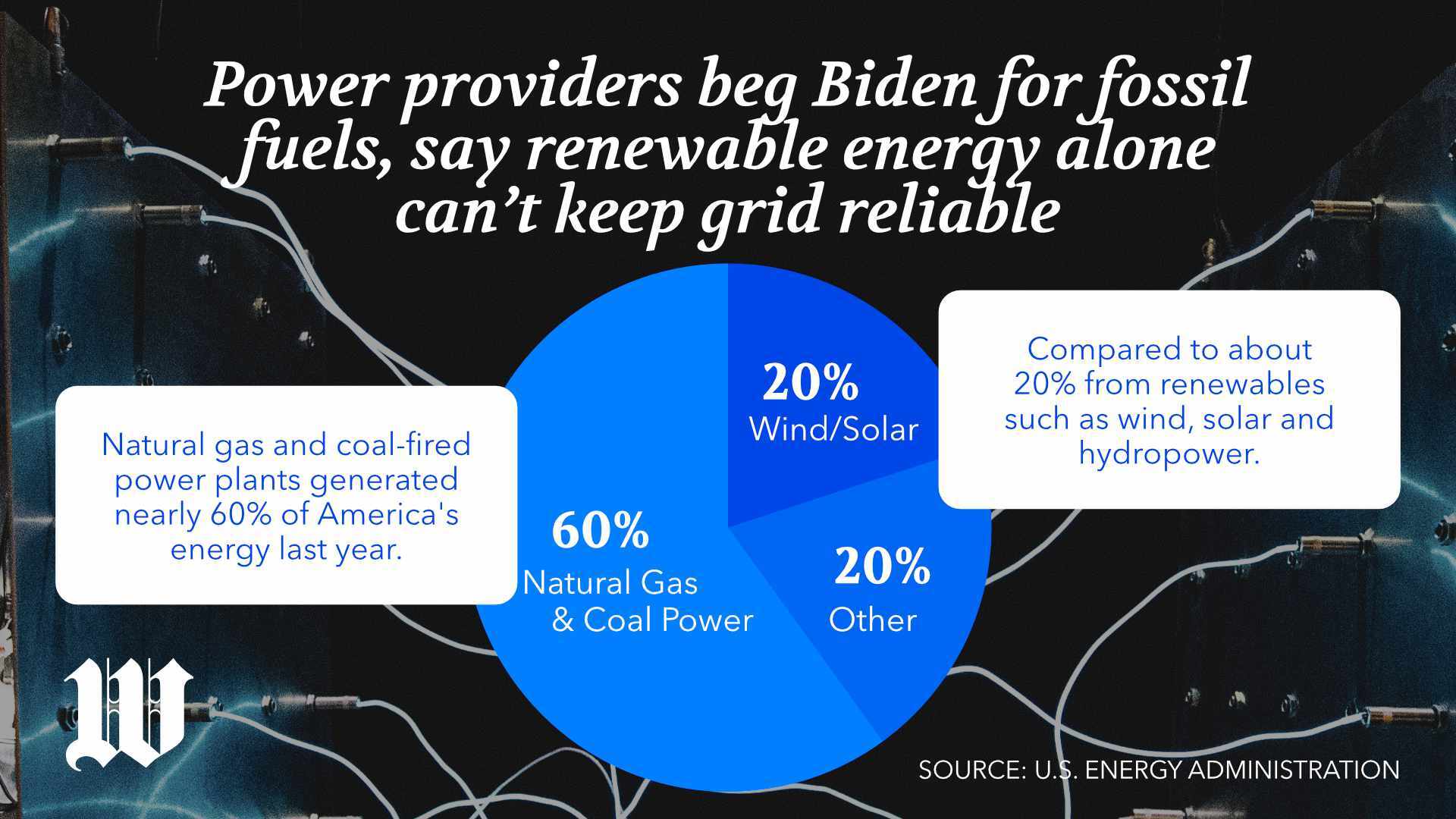Regional electricity providers tasked with keeping America’s lights on warned Tuesday that the Biden administration must delay the retirement of fossil fuel power plants to give renewables time to catch up — or else risk major energy shortfalls.
They said grid reliability would be jeopardized by quickly transitioning electricity use from coal and natural gas to green alternatives such as wind and solar.
The transmission groups, which collectively deliver power from energy sources to tens of millions of homes in dozens of states, told reporters that extreme heat conditions this summer underscore the need to slow the closures of power plants, particularly those using coal.
“I’m not saying now’s the time to double down [on fossil fuels]; I’m just saying now’s the time to slow down on the removal of [those] assets from our footprint,” said Lanny Nickell, executive vice president and chief operating officer of Southwest Power Pool, a regional transmission organization serving 14 states across the central U.S. from South Dakota to Louisiana.
Two other major regional electricity suppliers, PJM Interconnection and Tri-State Generation and Transmission, offered similar warnings.
“I would stress the need for a balanced portfolio. You do need wind, you do need solar, but you do need something to back it up,” said Tri-State Chief Operating Officer Barry Ingold. “You need something dispatchable. As we’re taking coal plants offline, our challenge is going to be … can you build a gas plant that bridges that gap?”
Tri-State provides electricity to 42 utilities across the rural West that serve 1 million consumers in Colorado, Nebraska, New Mexico and Wyoming.
Natural gas- and coal-fired power plants generated nearly 60% of the nation’s energy last year, compared with about 20% from renewables such as wind, solar and hydropower, according to the U.S. Energy Information Administration. The EIA forecast last year that renewable generation would more than double by 2050 to 44%.

A proposed rule from the Environmental Protection Agency would force natural gas- and coal-fired plants to slash pollution by 90% before 2040 or shut down entirely. Carbon capture technology would cut pollution by storing greenhouse gas emissions underground.
The transmission organizations feared goals from some Democratic-led states and the Biden administration to achieve a net-zero power sector in the coming decade were ill-advised and unrealistic. Mr. Biden has set a federal target date of 2035 to reach 100% clean electricity. Rhode Island, New Jersey and the District of Columbia want to achieve net zero by 2035.
The transmission suppliers said 2050 is a more achievable target date for several reasons, including a growing energy demand as the U.S. electrifies more appliances and vehicles, a lengthy permitting approval process for transmission projects to dispatch clean energy, and a lack of storage technology for renewable energy.
“As long as all options are on the table, certainly, I think those goals for 2050 or 2045 are achievable. We’ve got plenty of time to get there,” Mr. Nickell said. “I’m more worried about the goals being set by 2030.”
Mr. Biden and proponents of the green agenda say transitioning away from fossil fuels, the second-largest source of greenhouse gas emissions in the power sector, behind transportation, is vital to combating climate change. The president and others advocate for a faster pace and say the electric grid will be more secure and affordable if the U.S. relies on renewables.
The transmission groups emphasized the need for overhauling the permitting process to slash bureaucratic red tape that can tie up energy projects for a decade. Congress has been unable to reach an agreement on broad changes that could fast-track the approval process, which the transmission executives said could allow gas projects to replace coal — which is far dirtier — until renewables are rapidly scaled up.
Mr. Nickell said 8,000 megawatts of fossil fuel — enough to power roughly 8 million homes for a year — have been shuttered and 28,000 megawatts of wind capacity added over the past decade. Far more renewable power capacity is needed to serve the same number of homes, he said, because the usability of fossil fuel power’s capacity is 90%. Wind energy produces 15% to 20% of its capacity.
Natural gas and coal can provide power around the clock, but solar and wind can do so only when the sun is shining or the wind is blowing, without battery storage.
Mr. Nickell said his company, which generates most of its power from wind, would have been forced to throttle electricity in early June if it weren’t for backup fossil fuel power. A “highly unusual, highly unexpected” day that generated just 0.4% of its total potential wind power “created a significant amount of challenge for us.”
“There’s going to be times when you don’t get as much as you need, and you have to have something that’s [fossil fuel]-based, at least for now, to replace that until other technologies are developed,” he said.
• Ramsey Touchberry can be reached at rtouchberry@washingtontimes.com.




Please read our comment policy before commenting.